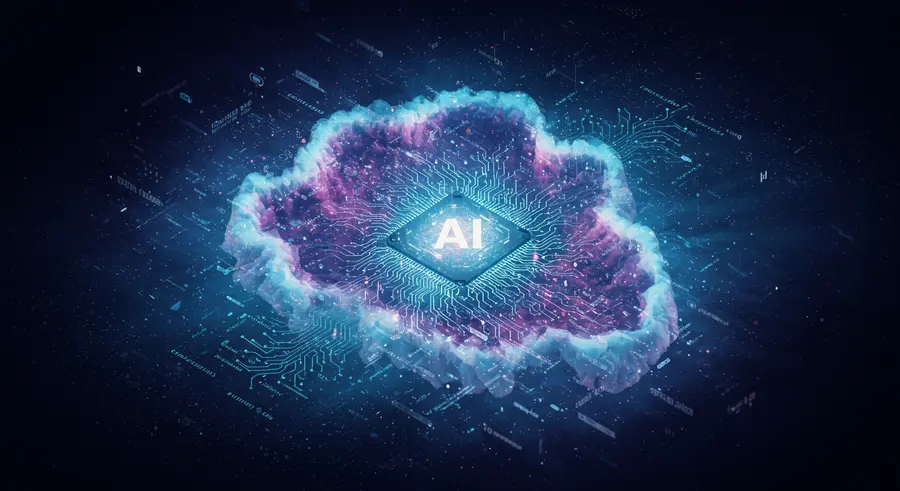The Convergence of IaC and AI: Automating the Future

Infrastructure as Code (IaC) has fundamentally changed how we manage IT resources, bringing software development practices like version control, testing, and CI/CD to infrastructure management. As we venture further into an era of complex, dynamic, and large-scale cloud environments, the next evolutionary step is the integration of Artificial Intelligence (AI) with IaC. This powerful combination, often referred to as AIOps in a broader context, promises to unlock unprecedented levels of automation, efficiency, and intelligence in managing our digital foundations.
How AI Supercharges IaC
AI, particularly machine learning (ML), can analyze vast amounts of data generated by infrastructure and applications, identify patterns, predict future states, and even take autonomous actions. When applied to IaC, AI can:
- Intelligent Template Generation and Optimization: AI can learn from existing IaC templates (e.g., Terraform configurations, CloudFormation templates) and suggest optimizations for cost, performance, or security. It could even assist in generating new templates based on high-level requirements, reducing the manual effort and expertise needed. Imagine describing your desired infrastructure in natural language, and an AI translates it into robust IaC code.
- Predictive Scaling and Resource Management: By analyzing historical usage patterns and current trends, AI can predict future resource needs with greater accuracy than traditional threshold-based autoscaling. This allows for proactive scaling of infrastructure, ensuring optimal performance during peak loads and cost savings during quieter periods. For example, an e-commerce platform could automatically scale up its web servers and databases just before a predicted sales event, triggered by AI analysis of market trends and social media sentiment.
- Automated Security and Compliance Enforcement: AI algorithms can continuously monitor infrastructure configurations defined by IaC for security vulnerabilities, compliance drifts, or anomalous activities. If a deviation is detected, AI can automatically trigger remediation actions, such as reverting to a secure configuration or alerting security teams. This is crucial for maintaining a strong security posture in rapidly evolving environments. Darktrace is an example of a company leveraging AI for cybersecurity.
- Enhanced Anomaly Detection and Root Cause Analysis: AI excels at sifting through logs and metrics to detect subtle anomalies that might indicate an impending issue. When problems do occur, AI can accelerate root cause analysis by correlating events across different layers of the infrastructure, significantly reducing downtime and troubleshooting efforts.
- Self-Healing Infrastructure: The ultimate goal is an infrastructure that can detect, diagnose, and heal itself without human intervention. AI-driven IaC can identify issues (e.g., a failing service, a misconfigured network) and automatically apply corrective IaC templates to restore the desired state.
Use Cases and Real-World Impact
The application of AI in IaC is not just theoretical. Companies are increasingly exploring and implementing AIOps solutions that leverage these principles:
- Cloud Cost Optimization: AI tools analyze cloud spending patterns and IaC configurations to recommend rightsizing of instances, identify unused resources, and suggest more cost-effective service tiers.
- Proactive Incident Management: By predicting potential failures, AI can help teams address issues before they impact users, moving from a reactive to a proactive operational model.
- Smart CI/CD Pipelines: AI can optimize CI/CD pipelines by, for instance, predicting the risk of a new deployment based on code changes and test results, or by intelligently allocating testing resources.
For further reading on how AI is shaping various industries, IBM Watson offers a wide range of AI-powered solutions and insights.
Challenges and the Road Ahead
Despite the immense potential, integrating AI with IaC is not without its challenges:
- Data Requirements: Effective AI models require large volumes of high-quality data. Collecting, cleaning, and labeling this data can be a significant undertaking.
- Complexity: Building and maintaining AI models for infrastructure management requires specialized skills in both AI/ML and DevOps.
- Trust and Control: Giving AI autonomous control over critical infrastructure requires a high degree of trust in its decision-making capabilities. Establishing clear boundaries and human oversight mechanisms is crucial.
- Explainability: Understanding *why* an AI made a particular decision (e.g., to scale down a service) is important for debugging and building confidence in the system.
The journey towards fully AI-driven IaC is ongoing. However, the advancements in AI and the increasing adoption of IaC principles are paving the way for a future where IT infrastructure is not just automated, but truly intelligent and self-managing. This convergence will be a key enabler for businesses to innovate faster, operate more efficiently, and deliver more resilient services.
Explore other aspects of IaC: Back to Home Sections